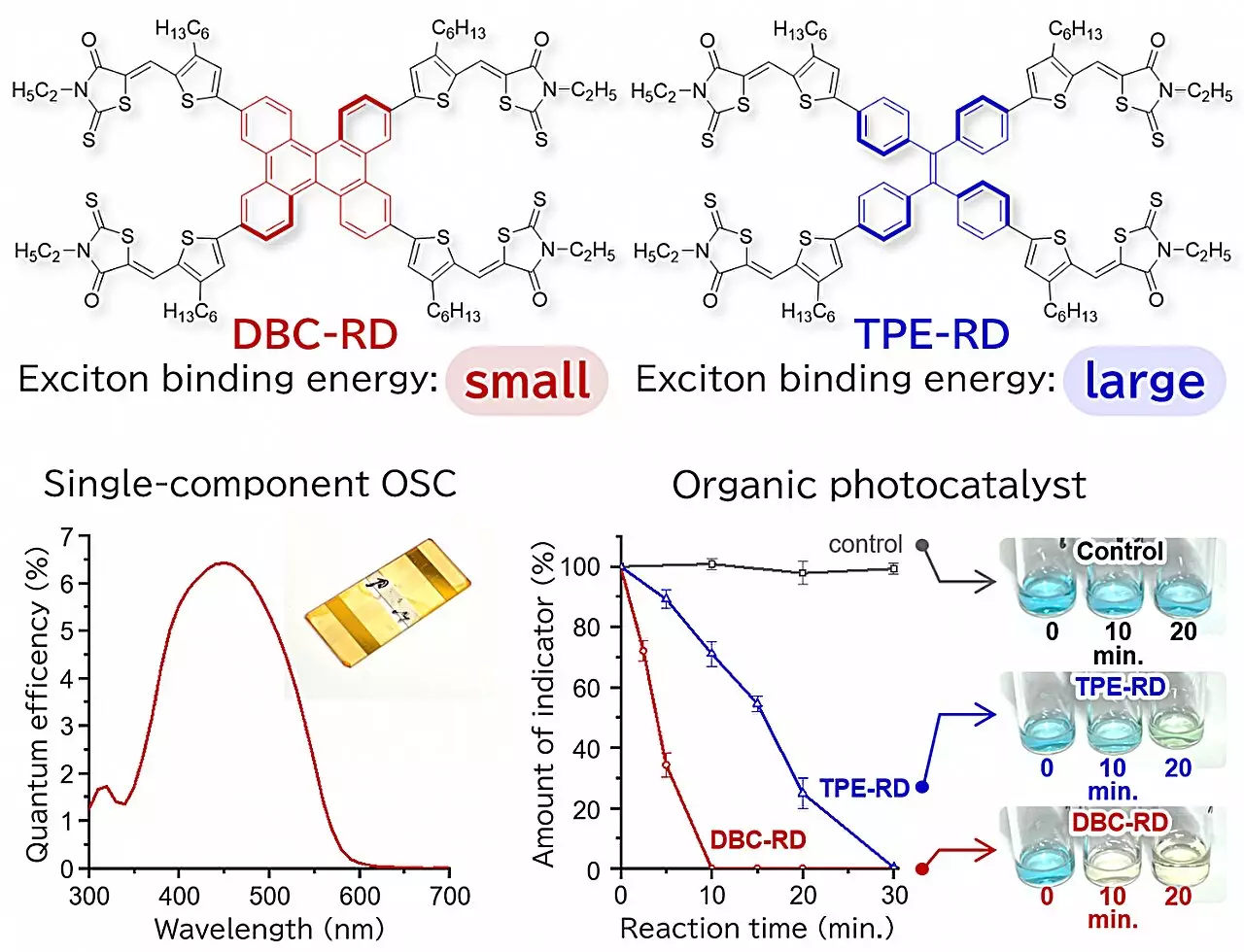As the world grapples with the consequences of climate change, the search for sustainable energy solutions has never been more pressing. Central to this pursuit is solar energy, a resource abundant yet underutilized. The innovation of optoelectronic devices, particularly organic solar cells, represents a significant leap forward in harnessing solar energy efficiently. These devices rely on organic compounds to transform sunlight into usable electricity, highlighting the importance of molecular design in optimizing their performance.
Recent advancements led by researchers at Osaka University shed light on a promising strategy for enhancing the efficiency of organic solar cells: controlling the stacking behavior of light-absorbing molecules. The study reveals that the arrangement of these molecules in solid-state films can dramatically influence their exciton-binding energy, a crucial factor in determining how effectively they can generate free-charge carriers. Exciton-binding energy refers to the energy required to free carriers of electric charge from their bound state, and a lower value typically results in improved device efficiency.
A pivotal finding from the research involves the synthesis of two distinct types of star-shaped molecules, differing in their central structure—one rigid and the other flexible. While both types exhibited comparable behavior when dissolved, their performance diverged significantly in solid form. The rigid molecules, akin to stacked plates, facilitated an efficient assembly that subsequently lowered exciton-binding energy. Contrastingly, the flexible counterparts tended to disorganize, inhibiting optimal performance. This fundamental difference underscores the importance of molecular aggregation in solid-state devices.
To validate their hypothesis, the researchers constructed prototype organic solar cells and photocatalysts employing both types of molecules. The results were compelling; devices incorporating the rigid molecules demonstrated markedly superior efficiency due to their capacity to generate free-charge carriers effectively. These findings indicate a potential pathway for the development of next-generation optoelectronic devices by strategically engineering molecules that can achieve ideal aggregation.
The implications of this research extend beyond mere theoretical interest. By understanding and manipulating molecular stacking, scientists can design new organic materials that enhance energy conversion processes, pushing the boundaries of solar technology. As global energy demands escalate and the repercussions of environmental degradation become ever more dire, optimizing organic solar cells stands as a critical endeavor. With continued exploration into molecular dynamics and aggregation behaviors, the vision of a more sustainable and energy-efficient future becomes increasingly attainable.
The advancements in controlling exciton-binding energy through molecular design represent a significant frontier in the field of optoelectronics. As research continues, the potential for developing efficient, flexible, and lightweight solar technologies seems boundless, paving the way for a cleaner, greener planet powered by renewable energy.

